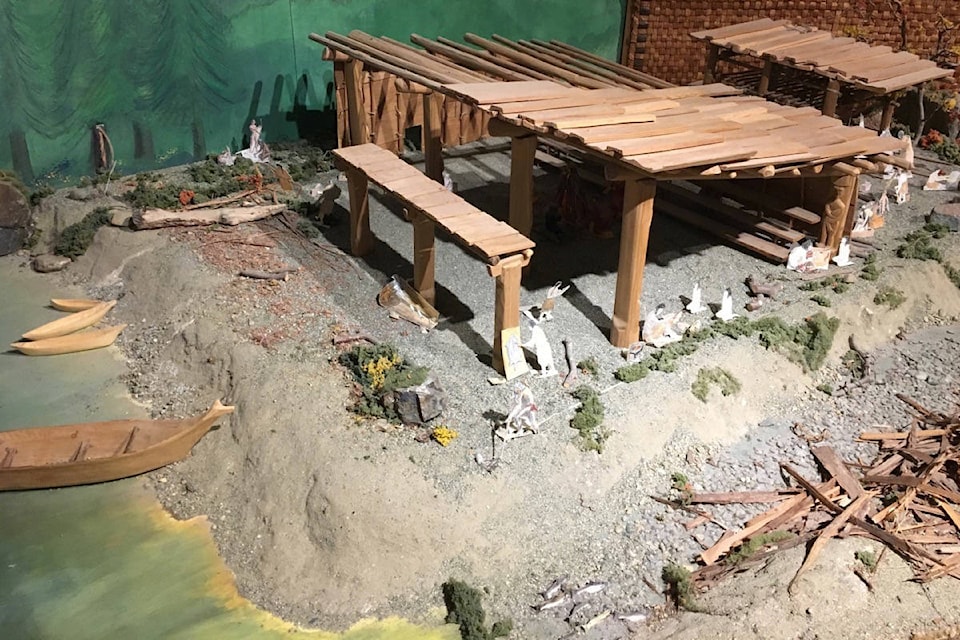Montana Stanley | Contributed
The Sooke Region Museum has a variety of 3-D models on display. Because there’s physical limits to the size of exhibits, models are a useful and exciting visual tool for museum visitors to understand and interact with the “bigger picture” of a time, place, or phenomenon.
A model of a First Nation’s longhouse along the ocean’s edge is one of the first pieces visitors may see as they enter the museum.
This model captures the essence of daily Coast Salish life in and around the longhouse. Longhouses were built to easily access resources and live off the land. Figurines made of paper can be seen partaking in different activities such as cooking, harvesting, fishing, crafting, and weaving.
This model was a collaborative effort from different members of the community. The longhouse model was made for the museum by elder Simon Charlie of the Cowichan band. Joan O’Donnell created a model riverside landscape to house the longest portion.
The Bear Creek Bridge diorama is one of several built and donated by Horace Arthurs, a prominent figure involved in the logging industry and the Sooke Region Museum.
The diorama was donated to the museum in June 2002. It was made as close as possible to scale from photographs of the region.
Constructed of plastic plants, a wooden trestle bridge, and a metal and plastic train, this diorama represents the Bear Creek trestle in the San Juan valley, built in 1939.
The Bear Creek trestle spanned the Bear Creek Canyon and was part of a 24-kilometre rail system that ran inland from Port Renfrew. It was constructed by the Malahat Logging Company using Douglas-fir timbers and piles, and was the highest wooden trestle in B.C. at the time.
This diorama features a 50-ton Shay locomotive moving logs on skeleton, or flatbed cars with a frame, and a bulldozer carried on bull, or flatbed cars.
Details like a small plastic bear lounging on a log in the valley under the trestle while a plastic man climbs a wooden ladder up the side of the trestle make this model particularly engaging. This model sets the scene for what it might have been like to work along the railway.
This diorama, as well as others depicting logging operations, was created with the purpose of preserving the forest history of British Columbia, and creating awareness around logging operations in the area.
Another model featured at the museum represents commercial fishtraps operations in Sooke circa 1904-1958. J.H. Todd and Sons and Sooke Harbour Fishing and Packing were long time operators. This model is specifically of the Otter Point fishtrap, and was constructed by Bill Baker and Jim Forrest, both of whom were employed on the fishtraps.
The model is made from wood, wire, fine mesh and net string. Fibre glass is used to represent the ocean bottom and a Plexiglas sheet is used to represent sea level. Two small carved boats are attached that lead to the trap.
Actual pilings for traps could run up to 150 feet deep. They were pile-driven each spring and removed each fall, and were stored at Whiffin Spit. The salmon were trapped in nets and then lifted into barges by fishtraps crews, a process called brailing. The fish would then be shipped to canneries. After 1958 this method was replaced by fleets of commercial fishing vessels.
•••
Montana Stanley is the collections and exhibits manager at Sooke Region Museum.
